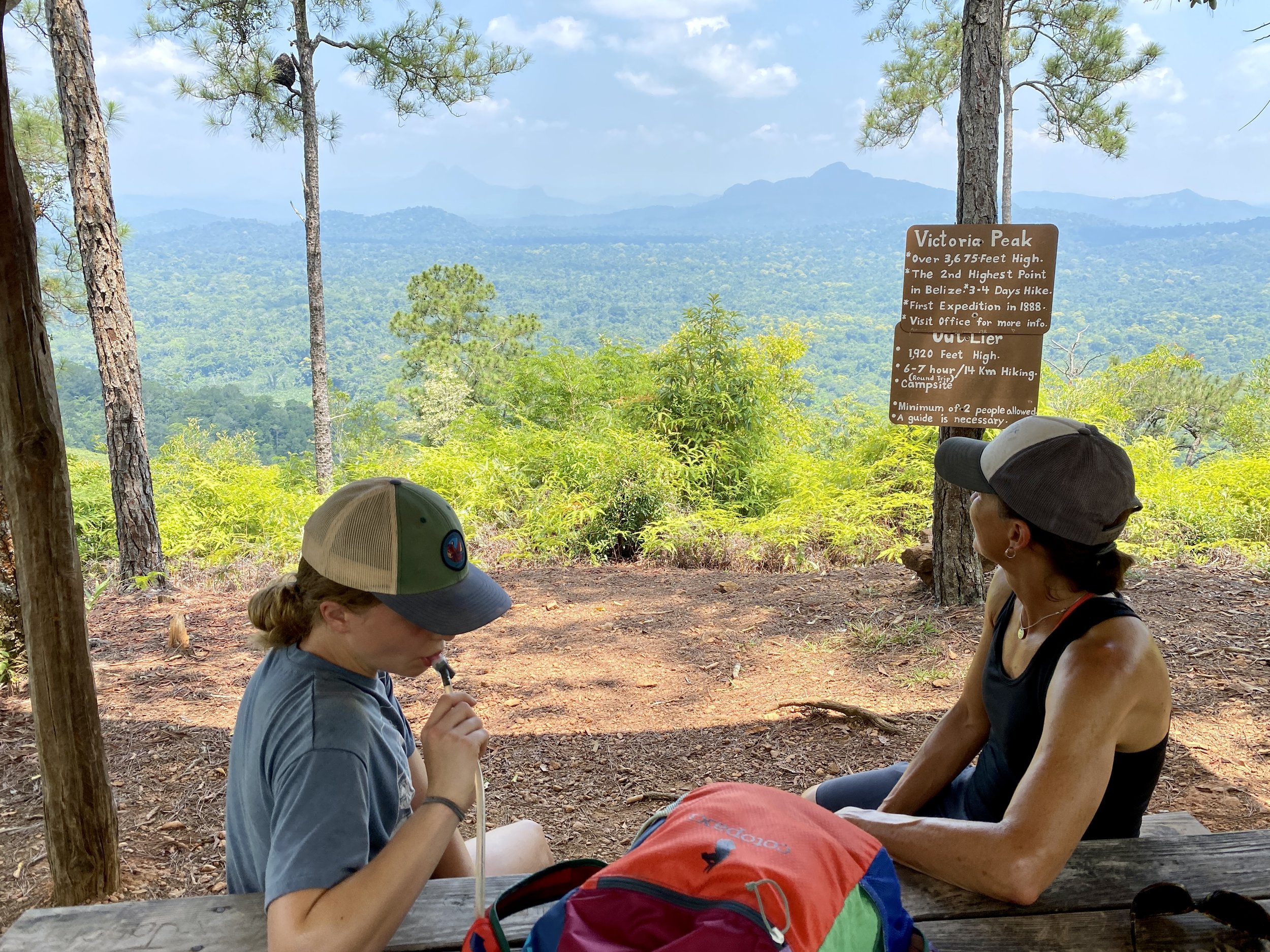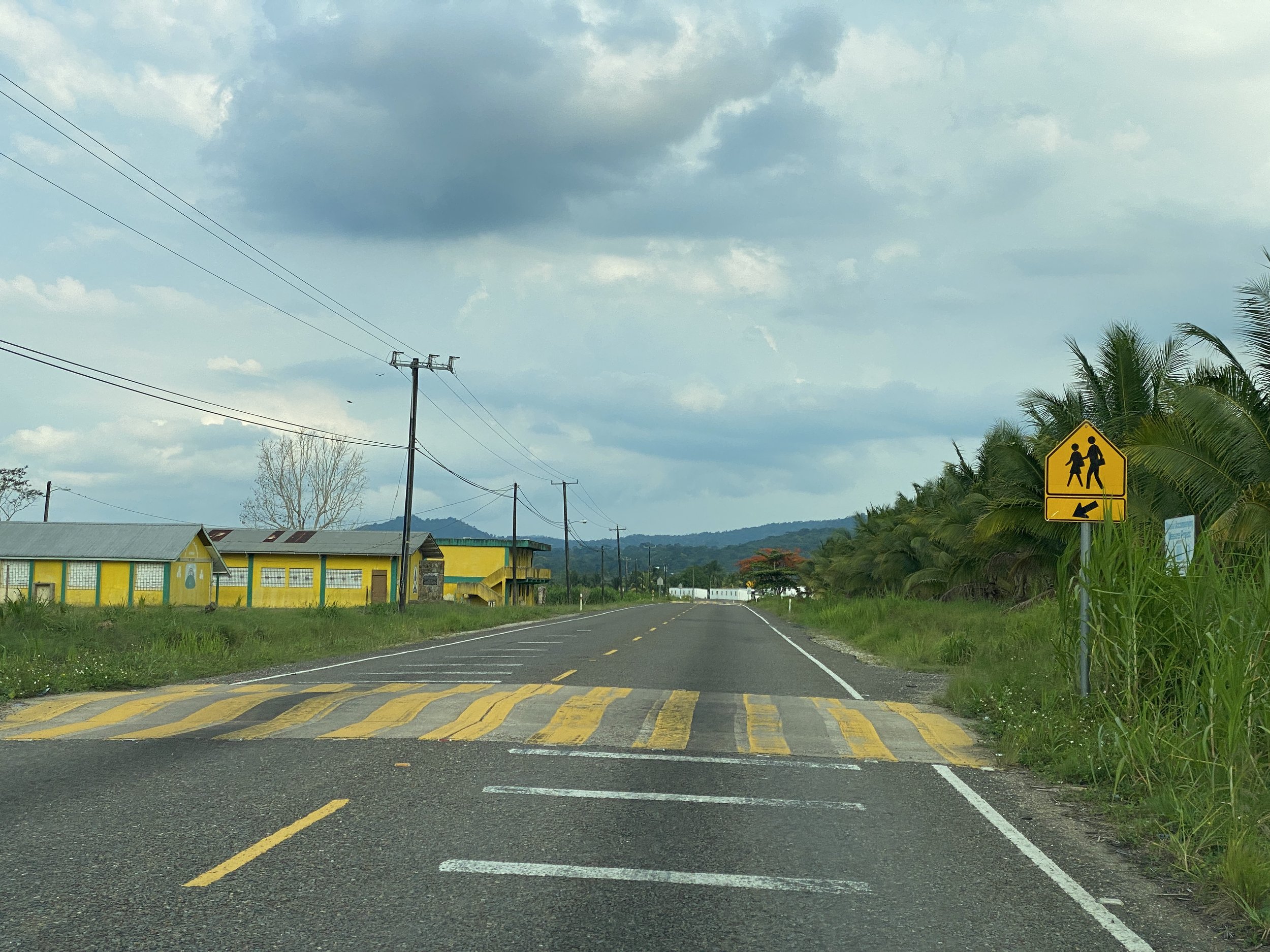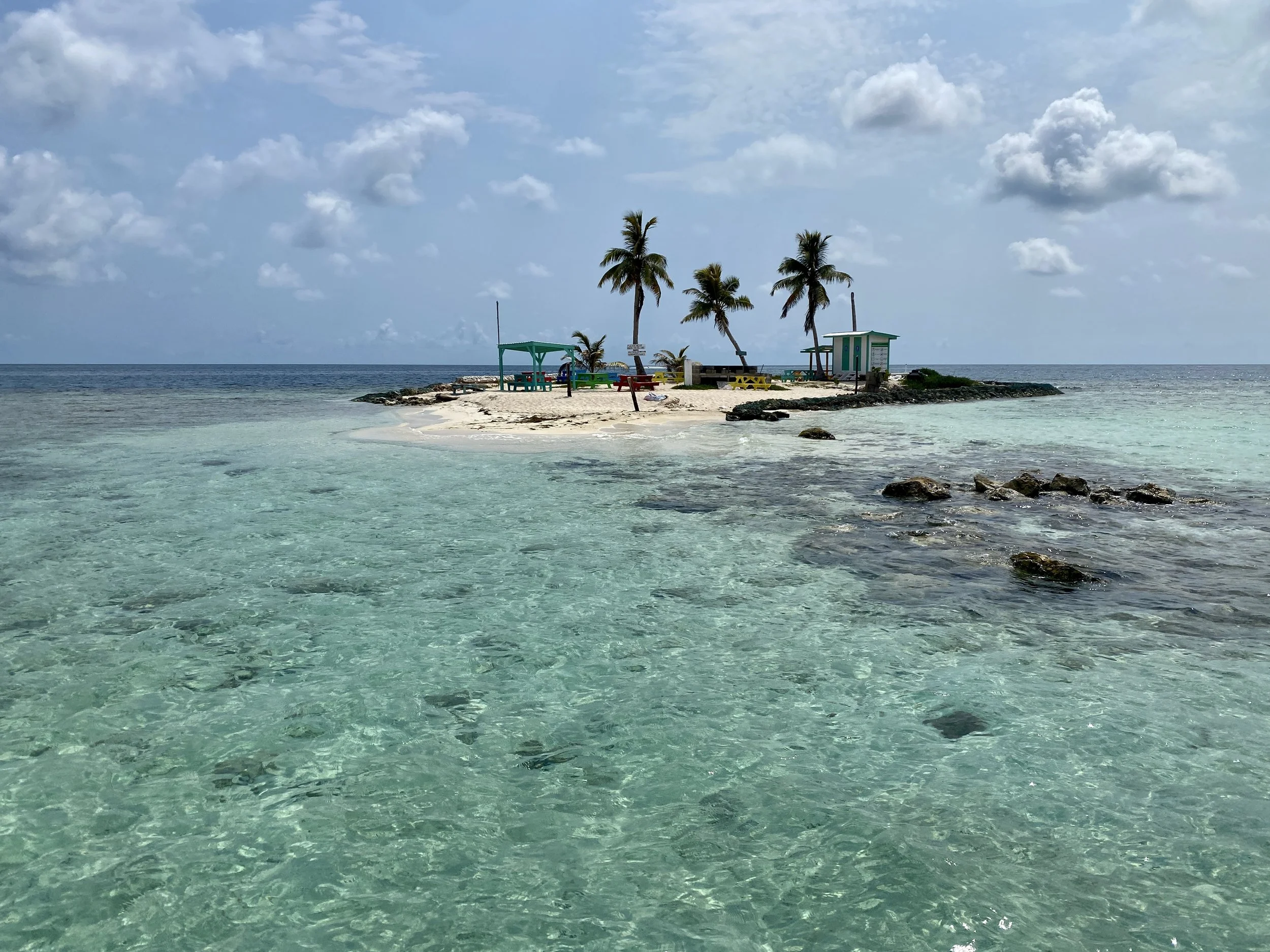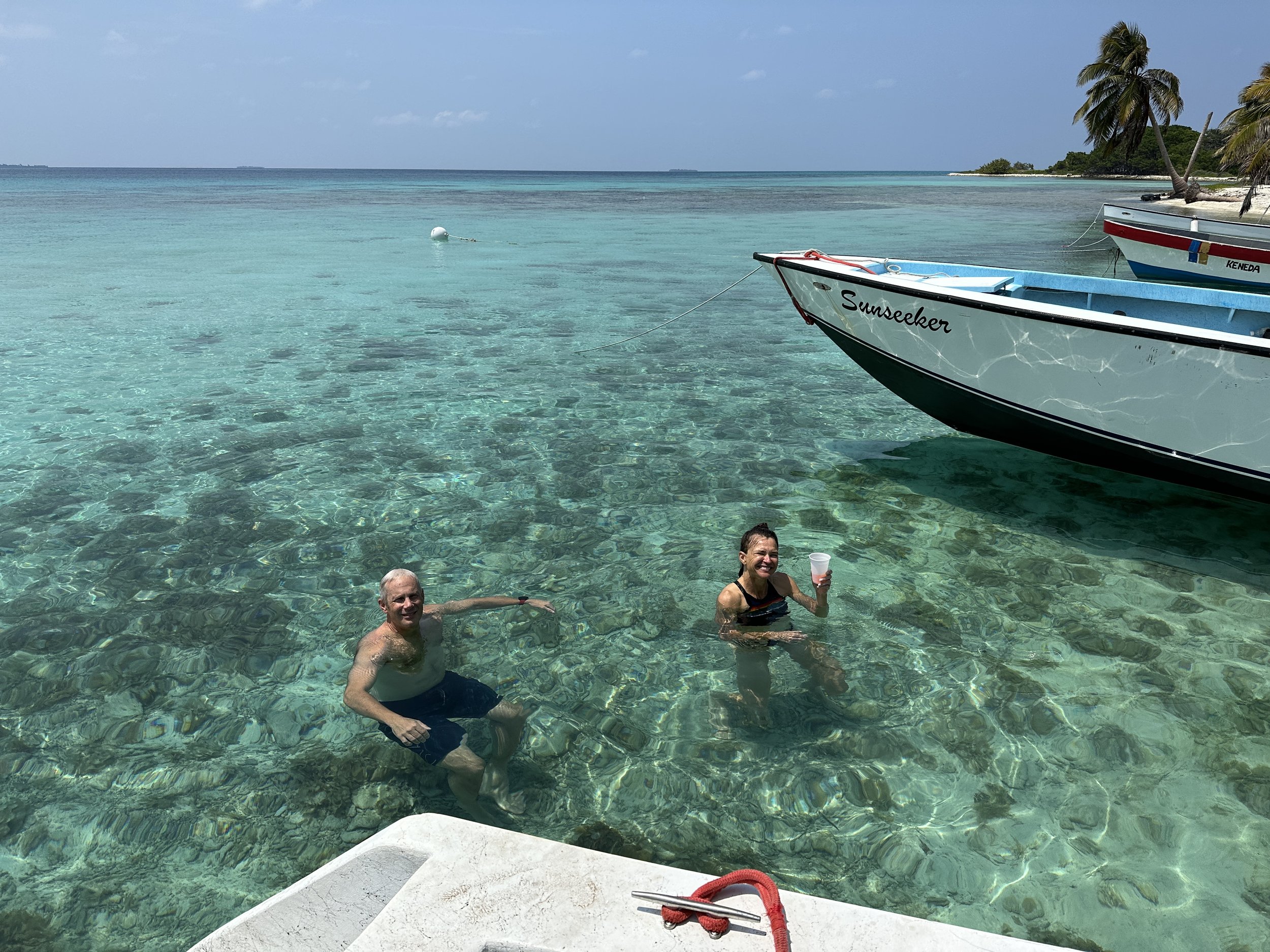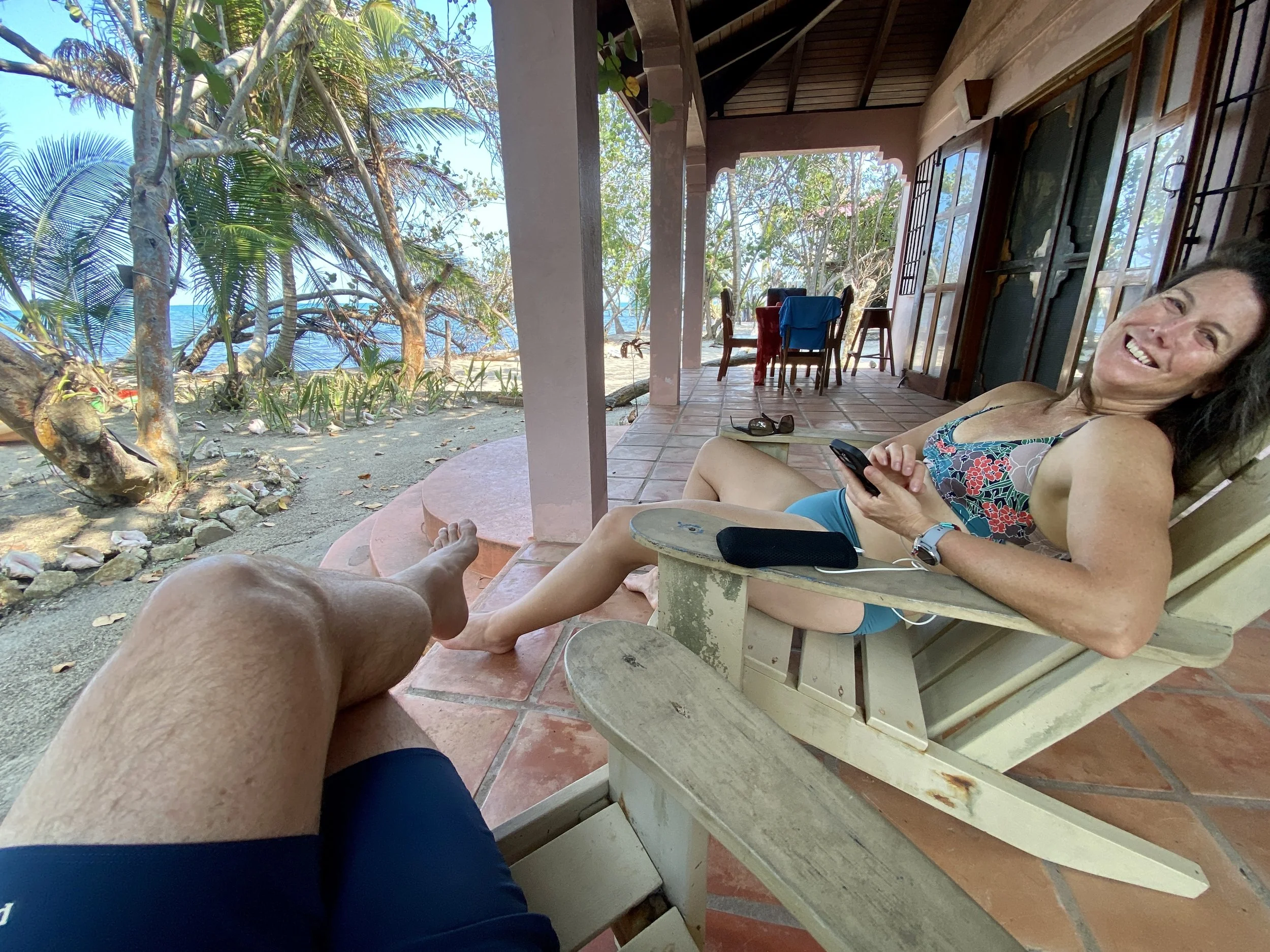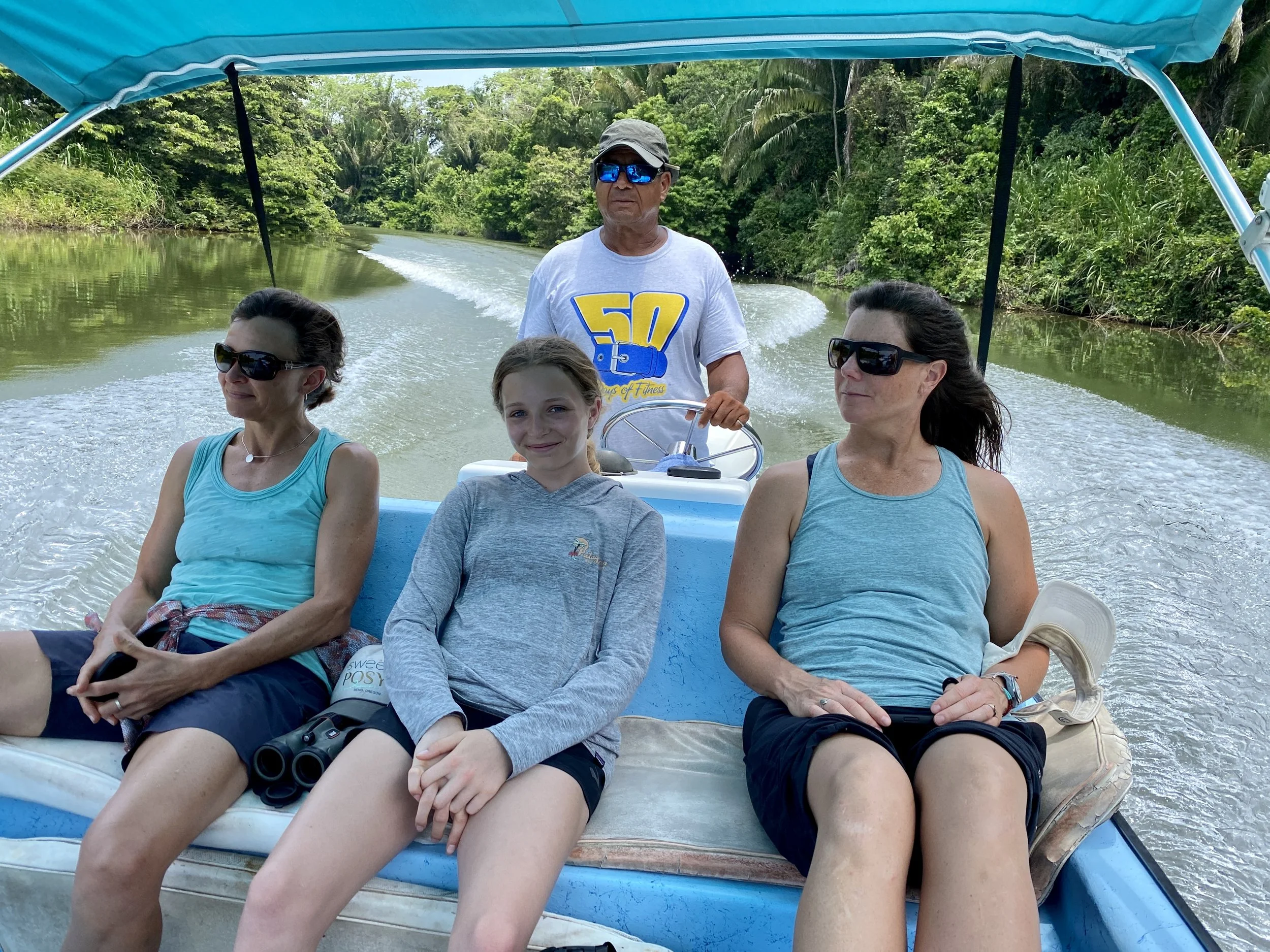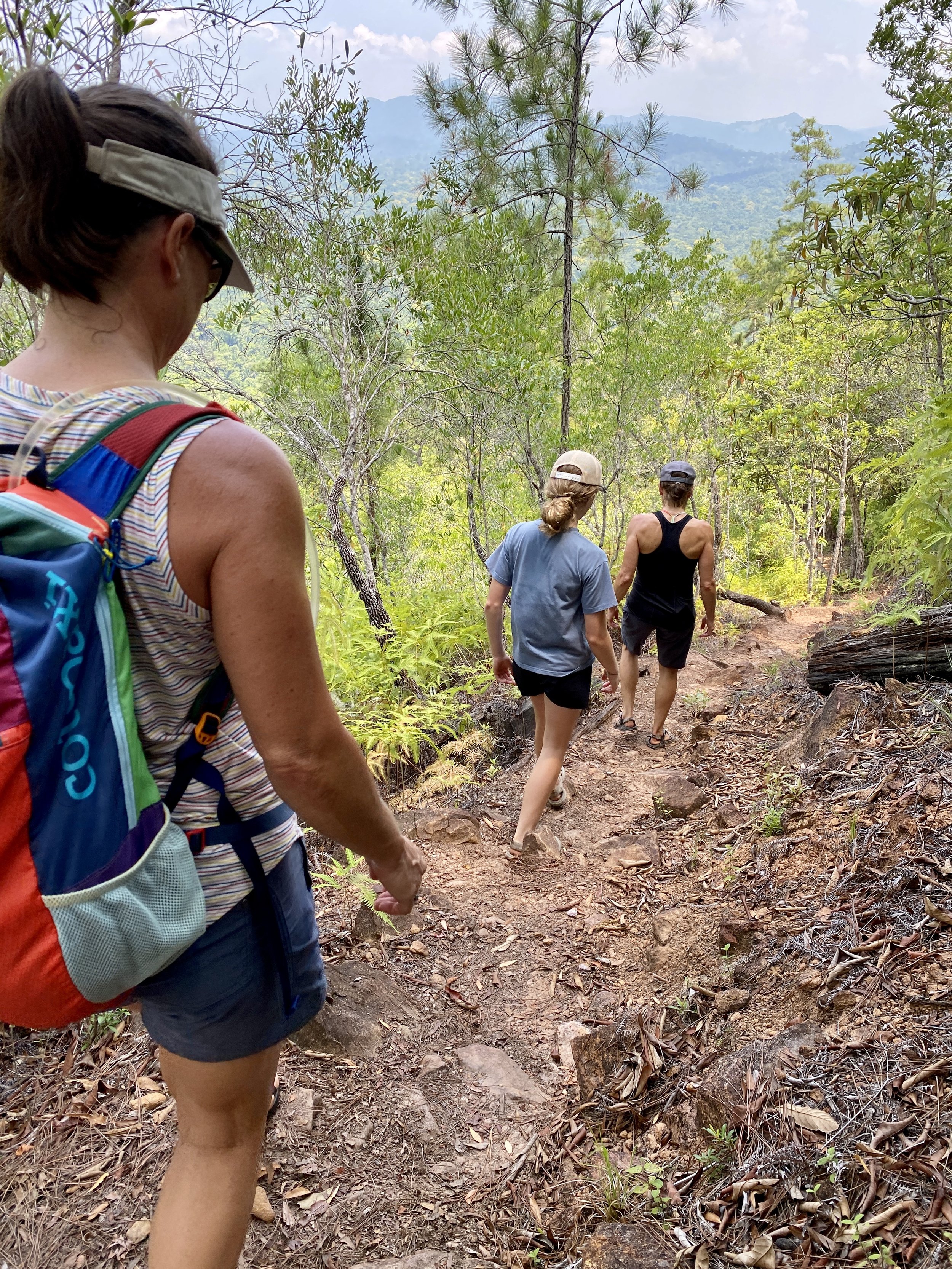Discover the natural marvels of Central America in Belize
Nestled on the east coast of Central America, Belize remains one of the region’s best-kept travel secrets. With inspiring natural beauty, diverse wildlife, and rich cultural heritage, Belize offers an unforgettable experience for adventurers and nature enthusiasts alike.
What’s more, Belize is a friendly country for less experienced travelers. Several languages are common, but the national language is English and spoken everywhere we went. The U.S. Dollar is accepted with an easy exchange of one U.S. dollar to two Belizean dollars. And with the exception of certain parts of Belize City, the country is considered fairly safe.
So let's dive in and discover why Belize may deserve a spot on your travel bucket list.
Our Belize travel itinerary
Our trip to Belize in the spring of 2023 was a fortunate accident. I’d started work on my 50 at 50 bucket list, which included traveling to a foreign country and SCUBA diving “somewhere cool,” but I didn’t yet know if or where those activities would occur.
A friend reached out in March to let us know her travel buddies had dropped out of a long-anticipated trip to Belize and asked if we’d take their place. It took a few weeks of planning, but we compared notes about things we wanted to do, checked out the geopolitical situation, found places to stay, and booked plane tickets.
We left room to improvise, but our itinerary looked like this:
Fly into and out of Belize City and rent a car at the airport.
Spend a few days SCUBA diving from Placencia.
Tour the jungle surrounding Monkey River and Monkey River Town.
Hike at Cockscomb Basin Wildlife Sanctuary.
Visit San Ignacio and tour Mayan ruins at Xanantunich.
Having a rental car also meant we’d be able to improvise. We were only committed to the accommodations we’d booked through Airbnb in Placencia, San Ignacio, and Belize City.
In this article:
A cultural melting pot
One of Belize's most enchanting qualities is its unique blend of cultures. Infused with influences from the Mayan, Garifuna, Creole, and Mestizo traditions, the country is a rich cultural tapestry that comes alive through its food, music, and festivals.
The Mayan civilization has ancient roots in Belize and has left an indelible mark on the country's cultural landscape. The architectural remnants of Mayan cities, such as Caracol and Xunantunich, stand as testaments to their advanced civilization. The Mayan influence permeates daily life in Belize through the use of traditional medicinal practices, language, and agricultural techniques. This cultural continuity creates a unique connection between the past and present, and makes it easy for visitors to experience some of the living history of Belize.
The Garifuna community, descended from Afro-Caribbean and indigenous people, contributes to Belize’s cultural mosaic with its vibrant music, dance, and spiritual practices. The Garifuna’s traditional drumming and punta dance are not only captivating performances but also serve as expressions of their heritage.
Creole culture is a fusion of African, European, and indigenous influences, and it further enriches Belize’s cultural melting pot. The Creole language, Kriol, reflects this amalgamation, and traditional dishes like hudut (fish stew) and rice and beans with stewed chicken showcase the culinary fusion. Belize’s festivals, such as the annual September Celebrations, provide a platform for Creole music, dance, and art to take center stage.
Belize City and Philip SW Goldson International Airport
Philip SW Goldson International Airport is only 5 miles west of Belize City.
Most visitors to Belize will touch down at Philip SW Goldson International Airport, just 5 miles west of Belize City.
Beyond its convenient location close to Belize’s largest metropolitan area, the airport stands out for its modern amenities and services. Travelers stepping off the plane are met with a well-equipped facility, offering a range of conveniences that include efficient baggage handling, rental car services, and a variety of gift shops and dining options.
For us, the airport’s seamless operation set the tone for a smooth travel experience overall.
Belize first impressions
My first impressions of Belize were formed on the drive from Belize City to Placencia on the Hummingbird Highway. The country is more beautiful and mountainous than I expected.
I’d never been to Central America before traveling to Belize, and I didn’t know what to expect. I conjured stereotypes of developing Central American countries, which proved accurate in some ways and wildly off base in others.
We talked with some U.S. expats going through customs. They lived in Placencia, the coastal city that would be our initial destination. The most direct route, The Coastal Highway, was closed, so we’d have to drive to Belmopan and head south through the mountains on the Hummingbird Highway. They said the roads were narrow and winding, but in great condition.
After passing through customs, we completed paperwork for our rental car, a small Hyundai sedan, and turned toward Belmopan. The first part of the drive took us across a coastal plain with low-lying vegetation and palm trees, and impoverished-looking settlements inhabited primarily by people of African descent. Quite a few people sold fish alongside the road. Hitchhikers were common. The majority of houses were on stilts. Far to the south, steep-sided mountains poked from the plain.
The forest grew thicker, and ebbed close to the highway as we approached Belmopan, and when we turned south on the Hummingbird Highway we soon arrived in a beautiful, densely-forested mountain range with summits towering a couple thousand feet above the valley floor.
The towns we drove through—Amenia, Santa Marta, Middlesex, and more—were small, well-kept villages where locals sold anything from fruit to burritos along the highway in front of their homes.
The mountains remained visible to the west as we returned to the coast and drove south to the Placencia peninsula, where the country’s modest homes gave way to developments of large first-world estates. The contrast between the country’s relative poverty and the foreign-influenced opulence in and around Placencia was striking, but the area retains its Central American charm.
Exploring the Caribbean from Placencia
Placencia is a resort community and a great home base from which to explore the Belize Barrier Reef and nearby jungle.
The 16-mile-long Placencia Peninsula is home to several towns including Riversdale, Maya Beach, Seine Bight, and Placencia. It started as a Creole fishing village, but has transformed in recent decades into a resort community with beach resorts, restaurants, bars, and tour operators. It’s a tropical paradise with pristine beaches, swaying palm trees, and crystal-clear waters.
The Spanish that explored the southern coast of Belize gave Placencia its name, originally calling it Placentia, with the point being called Punta Placentia, or Pleasant Point. Located at the end of the peninsula, the town of Placencia is home to about 2,500 people and the majority of the peninsula’s tourist activity.
Our modest Airbnb about a mile north of town near the Placencia Airport included four beachside open-air bungalows next door to an opulent resort. We visited several restaurants in Placencia, but our favorite local business, which we visited at least daily, was Tutti-Fruitti, which serves hand-made gelato from an air conditioned storefront downtown.
In addition to its resorts, restaurants, and bars, Placencia is one of the principal hubs from which divers can explore the protected waters and hundreds of cays, or islands, behind the Belize Barrier Reef, the largest barrier reef in the Northern Hemisphere and the second largest barrier reef on the planet.
SCUBA diving the Belize Barrier Reef
We did four dives on the Belize Barrier Reef. The locations we dove were in great shape without evidence of bleaching.
Belize is home to the second-largest barrier reef system on the planet, known as the Belize Barrier Reef Reserve System. This underwater marvel is a testament to nature’s artistry, and boasts vibrant coral formations, a kaleidoscope of colorful fish, and a menagerie of marine species. For scuba diving and snorkeling, it’s nothing short of a utopia.
We chartered two days of diving with Seahorse Dive Shop, which runs a friendly and professional business right from the point in Placencia. Our boat crew and diving guides from Seahorse were professional, courteous, knowledgeable, and fun.
Because two of our group were relatively inexperienced divers, we chartered trips that progressed from easy to intermediate diving, starting with a mellow dive at about 30 feet and finishing with deeper dives, including a wall dive, with some modest current to manage.
Belize is home to some 400 cayes, picturesque small islands situated atop the reef. Each outing our guides based the day’s diving from a different caye where we regrouped for a homemade lunch and enjoyed relaxing in the Carribean sun. The cayes were right out of a picture postcard, with shimmering crystal-clear water surrounding small islands with only a handful of palm trees.
The picturesque Silk Caye from which we based our second day of diving.
During our four diverse dives, we saw dozens of fish species and corals including parrtotfish, trumpetfish, grouper, butterfly fish, barracuda, green moray eel, angelfish, reef sharks, stingrays, and a lot more. Water clarity varied from one dive site to the next, but lived up to Belize’s world-class reputation. The corals were not bleached at any of the sites we dived, and it was invigorating to discover so much life thriving beneath the ocean’s surface.
Though we didn’t dive there, it’s worth mentioning the Great Blue Hole, which is perhaps Belize’s most widely recognized natural marvel. It’s a massive underwater sinkhole, and its mysterious depths lure divers from around the world.
A plunge into the Great Blue Hole’s azure waters is said to lead to an otherworldly realm of stalactites, stalagmites, and intriguing marine life. The Great Blue Hole is on a lot of divers’ bucket lists, but our guides assured us that Belize has numerous more affordable dives that are every bit as inspiring and exciting—if not better.
At the end of each day’s diving, we lounged on the boat and enjoyed rum punch poured from a yellow Igloo drink cooler as the guides bantered in Kriol.
The Belizean jungle is full of wildlife
Walking through the jungle near the Monkey River., we saw dozens of birds, howler monkeys, medicinal plants, and got mauled by mosquitoes.
Beyond the captivating azure waters that hug Belize’s coast is a lush rainforest teeming with diverse plants and animals.
Belize hosts one of the world’s richest collections of biodiversity, with a number of species found nowhere else on Earth. This is partially because nearly 60 percent of the country is forested, with Central America’s last unbroken forest stretching from the Maya Mountains in the west to the Caribbean.
We got our first and best taste of this incredible biodiversity when we joined a guided tour of the Monkey River and Monkey River Town on the coast south of Placencia.
Monkey River Town is 12 miles south of Placencia, and the only way to get there is by boat. The town is sandwiched between the sea to the east, the river to the north, and the jungle to the south and west. Developed in the 1890s amidst the booming banana industry, Monkey River Town is now home to around 200 people and a small tourist industry built primarily around jungle tours.
Our guide captained a Boston Whaler from Placencia to the Monkey River estuary and motored us upstream while scanning the shoreline and forest canopy. He was born and raised in Monkey River Town and had an uncanny eye for wildlife and an encyclopedic knowledge of the local flora and fauna. He pointed out bats, howler monkeys, crocodiles, manatees, and two-dozen-odd bird species including little blue heron, great egret, green heron, tropical kingbird, groove billed ani, American woodstork and many, many more.
I’m generally drawn to physical activity and learning by doing, so am a little averse to guided tours. However, it’s also tough to imagine accessing such a remote and uninhabited part of a foreign country on your own and seeing so many species in such a short amount of time. Ours wasn’t the only tour boat on the Monkey River, but the jungle still felt wild and pristine.
Before boating back to Placencia, we stopped in Monkey River Town for a Creole meal of stewed chicken and rice, which would be one of the best we had during our week in Belize.
Cockscomb Basin Wildife Sanctuary is worth the visit
Visiting Cockscomb and taking a short hike is a great way to get a get a view of Belize’s massive, forested wilderness interior.
Another worthwhile destination near Placencia is the Cockscomb Basin Wildlife Sanctuary, home to the world's first jaguar reserve and largest concentration of jaguars on the planet. You’re unlikely to see one of the big cats, but the mountains of central Belize teem with life and are surprisingly scenic.
It would be easy to visit Cockscomb as a day trip from Placencia, but we visited as part of a travel day between Placencia and San Ignacio. A well-maintained dirt road leads 6 miles into the mountains from Maya Centre and ends at a parking lot and nature center from which a half-dozen trails lead into Belize’s enormous, road-free, forested mountain interior.
Most of the hikes require the services of a hired guide, and the big hikes into the reserve’s massive central wilderness can only be done during the late-winter and early spring dry season. We chose to head out on our own, which limited options to a short 1.2-mile, 700-vertical-foot hike through the jungle to a forested ridge called Ben’s Bluff.
Views spilled out across Belize’s interior to the north and west toward several high mountains: 3,675-foot Victoria Peak, the country’s second highest, and 1,920-foot the Outlier. Both can be reached via trails that depart the Cockscomb visitor center, and both also require a guide.
On our return hike, we stopped at Ben’s Bluff Waterfall and swam in the cool (certainly not cold) spring-fed water that collected at its base.
We visited Cockscomb in the middle of the day and didn’t see any jaguars, but as we got close to the parking lot, a troop of howler monkeys grunted and howled from across the river valley—an eerie and enchanting racket.
It was a short part of our week, but the hike in the reserve was one of my favorite activities from our week in Belize. I’d have liked to head out for a longer hike, so was discouraged a guide was required even for several of the shorter trails. That said, I also understand the dangers posed by the Belizean jungle, the impacts that unchecked recreation could have on the ecosystem, and also the opportunity for economic stimulus that requiring guides in a developing country provides.
Swimming and spelunking on Mountain Pine Ridge
Exploring the massive Rio Frio Cave.
From Cockscomb we returned to the highway and drove north and west to San Ignacio and an entirely different cultural experience. San Ignacio is on the west side of Belize near the border with Spanish-speaking Guatamala.
It is in western Belize that the country’s Mayan roots are most evident, with ancient Mayan ruins dotting the landscape and a higher percentage of Mestizos and people of Mayan descent than in other part of Belize that we visited.
Our first day in San Ignacio we split off from our travel buddies and drove to Mountain Pine Ridge, where deep gorges and ravines cut across dramatic granite expanses.
Mountain Pine Ridge covers more than 1,000 square miles and offers a stark contrast to the country’s rainforests. As its name implies, pine needles are more common than palm fronds, and the landscape includes huge caverns with stalactites and stalagmites, meandering rivers, steep streams, and towering waterfalls among rolling ridges and mountains.
We spent a day exploring Mountain Pine Ridge, including a hike through Rio Frio Cave, swimming at Rio On Pools, and finally cliff jumping and swimming at Big Rock Falls on Privassion Creek—all waterways that flow steeply west into the Mecal River, which flows north toward San Ignacio. It was a relaxing, unscripted day, and it felt good to be our own guides and take activities at our own pace.
On our return to San Ignacio, we drove through the mountain villages of San Antonio and Cristo Rey, modest, manicured, and picturesque settlements. After a full day on Mountain Pine Ridge we drove through without stopping, but the towns appeared to have a kind of authentic charm we didn’t see everywhere in Belize.
A portal to ancient civilizations
Exoloring Xunantunich, a portal to ancient civilization.
On our final day in San Ignacio, we dove deeper into the history of Mayan civilization. Nestled within the Belize jungle within sight of the Guatamala border, the ancient hilltop Maya archaeological site of Xunantunich offers visitors a journey back in time.
Accessed by a hand-cranked ferry that carries you across the Mopan River, the approach to Xunantunich is a unique experience in itself, providing a sense of anticipation as the ruins come into view.
Towering over the landscape is the iconic El Castillo, the main pyramid of Xunantunich, standing at over 130 feet tall. Visitors can climb the structure, and panoramic views from its top reveal views of the surrounding jungle and offer a glimpse into the strategic brilliance of the ancient Maya, who chose the hilltop site for its ceremonial significance and its defensible position.
It’s easy while walking among the structures at Xanantunich to imagine a busy civilization at work. It’s well preserved, but it’s also buffered from nearby cities and amenities.
As you walk the site, you’ll encounter intricately carved stelae and altars that narrate the history and rituals of the Maya civilization. The hieroglyphic inscriptions on these structures provide insights into religious and political practices of the Mayans of the time. The attention to detail in the carvings showcases the artistic prowess of the Maya and underscores the importance of Xunantunich as a cultural and ceremonial center.
The view from the top of El Castillo looking west into Guatamala.
An onsite museum provides additional context to an outing at Xunantunich and displays artifacts unearthed during excavations and offers a deeper understanding of the daily life of the Maya.
In addition to its historical significance, Xunantunich is situated amidst a pristine natural setting. The site is surrounded by tropical vegetation, and the sounds of exotic birds and howler monkeys add to the mystical atmosphere.
There are other significant cultural sites near San Ignacio as well. The Actun Tunichil Muknal cave, known ATM, includes ancient Mayan artifacts and the skeletal remains of individuals believed to be ancient Mayans who were sacrificed.
Caracol is another worthwhile Mayan archaeological site. It stands as one of the largest and most impressive ancient Maya archaeological sites in the region. Renowned for its towering pyramids, such as the Caana, which is the country's tallest man-made structure, Caracol offers a view into the advanced civilization and architectural prowess of the ancient Maya.
Exploring San Ignacio
Floyd at Quick Barber Shop gave me a great spur-of-the-moment hair cut.
We spent three days in San Ignacio, and each of those involved some exploring around town. On our third day, after visiting, Xunantunich, we returned to the city to experience a bit more. Our group split up for some ad-lib walking and visited some miscellaneous shops, a Mayan chocolate factory, a Belizean hot sauce bar, the San Ignacio Market, and a great little barber shop (because my hair had become pretty unruly).
San Ignacio is a city of about 20,000 people and is a hub of culture and history. With a population that reflects the country's diverse ethnic makeup, the city’s people engage in a variety of economic activities that include agriculture, tourism and commerce, giving San Ignacio a dynamic and bustling atmosphere.
While San Ignacio serves as a gateway to Mayan history, the town itself has colonial roots, dating back to the 19th century when it was established as a logging camp. Today, remnants of its colonial history can be seen in the architecture of some buildings, providing an interesting juxtaposition with the surrounding natural beauty.
The town center is adorned with colorful markets, lively street vendors, and local eateries serving authentic Belizean cuisine. The vibrant atmosphere is complemented by the Macal River.
Belize travel safety
Belize is a relatively safe country, but travelers should plan ahead and understand the risks whenever abroad.
Before traveling to Belize or any foreign country, it’s a good idea to look into the geopolitical situation, and any localized safety issues. The U.S. Department of State compiles information ranging from war to earthquakes and organized crime to petty theft, and it’s an extremely useful resource for travelers.
At the time of our travel in the spring of 2023, the State Department ranked Belize a 2, defined as “exercise increased caution,” on a 4-point scale where 1 is safest and 4 is the most dangerous. Belize City was ranked a 3, which the State Department defines as “reconsider travel.”
The State Department explains that violent crime can be common in Belize and is most common on the south side of Belize City.
“U.S. citizens should avoid traveling to Belize City,” the State Department wrote. “Historically much of the violent crime in Belize occurs in the Southside of Belize City and is gang related. This area (south of Haulover Creek Canal and continuing south to Fabers Road) does not overlap the typical tourism areas.”
We stayed at a gated Airbnb on the north side of Belize City the night before our departing flight and talked with the proprietor before heading out for dinner. She said caution was warranted and that we should not venture out after dark.
The night before boarding our flight to return home, we walked about a mile along a seaside pedestrian path and had dinner and beers at a fantastic open-air restaurant with live music and culturally-rich food, all within a few short blocks of our accommodation. We were a little more guarded than we’d been in other parts of the country and returned to our Airbnb shortly after dark, but it felt safe and we had a great time.
The best part is always the people
With its pristine beauty, deep historical roots, and welcoming diverse culture, Belize offers a tapestry of experiences. From the depths of the barrier reef to the heart of the jungle, Belize provides a huge diversity of wonders to explore.
While the places you’re going and thing's you’ll do will occupy most of your attention while planning for a trip to Belize, the best parts of our trip came from meeting people and experiencing their warm generosity. Floyd the barber, Amir our SCUBA guide, the adorable and friendly family that sold us burritos in front of their home near Middlesex, our expat hosts in San Ignacio, the man who went out of his way to open the hot sauce bar when it was closed, and many more helped make our trip to Belize unforgettable.

